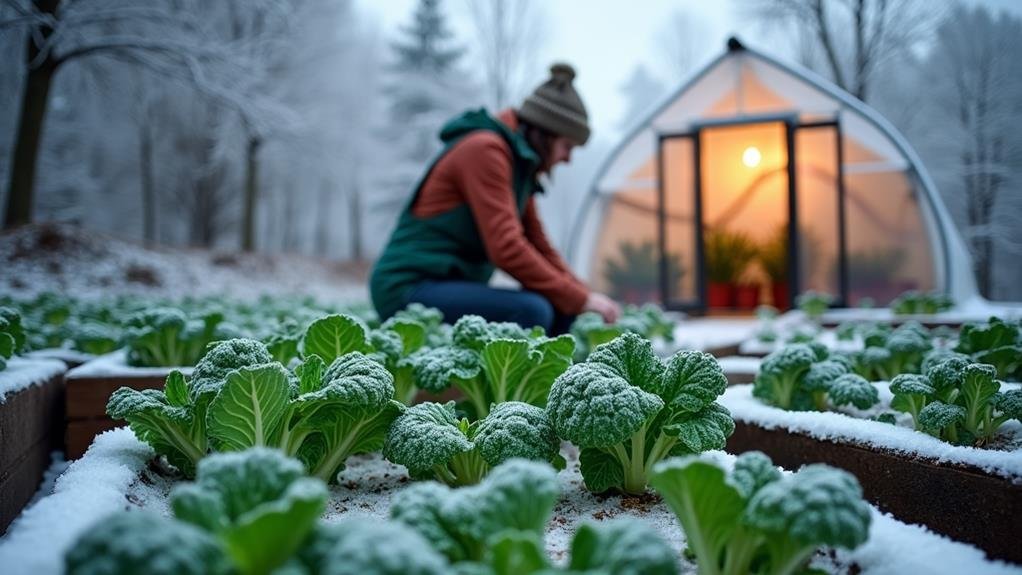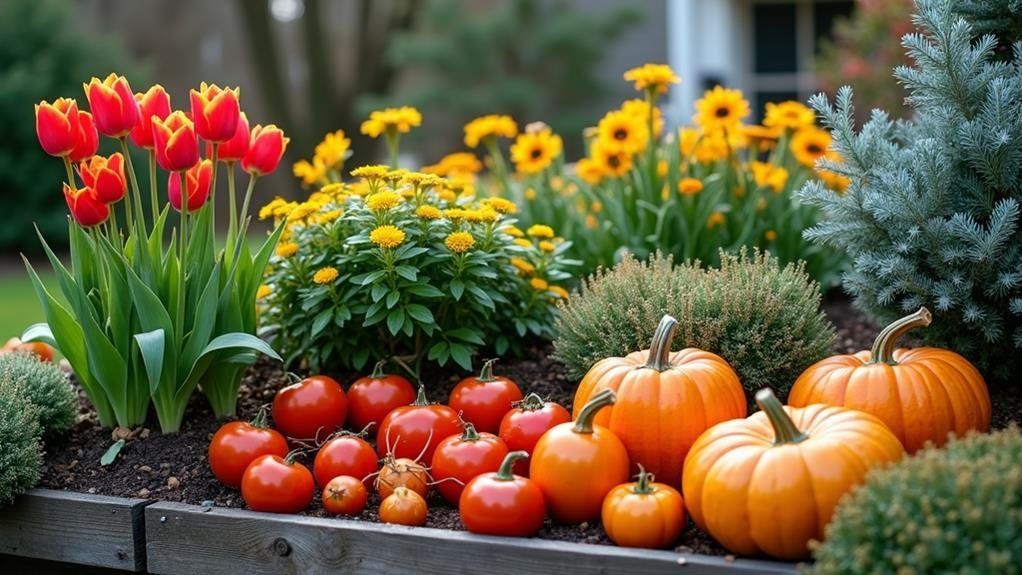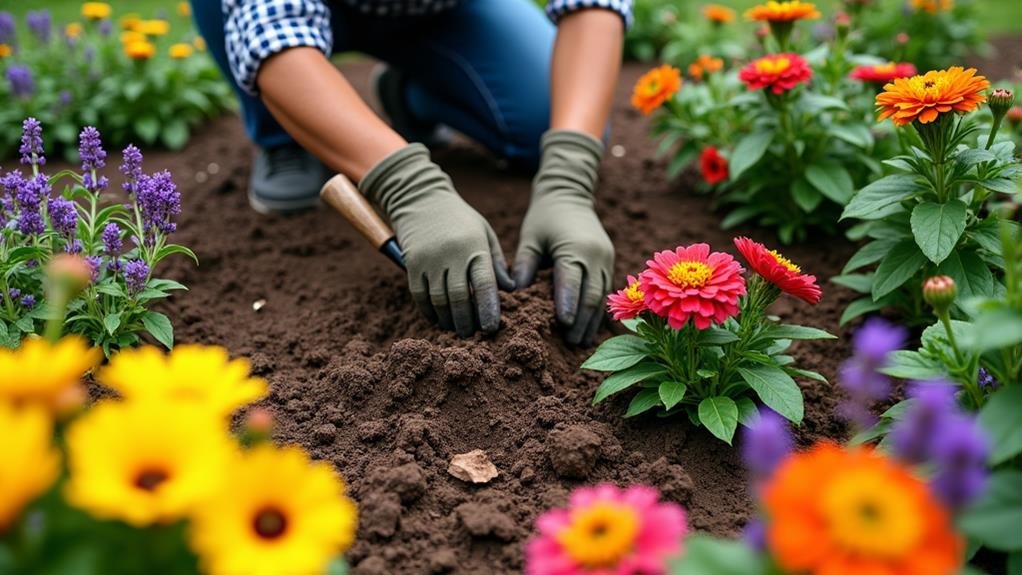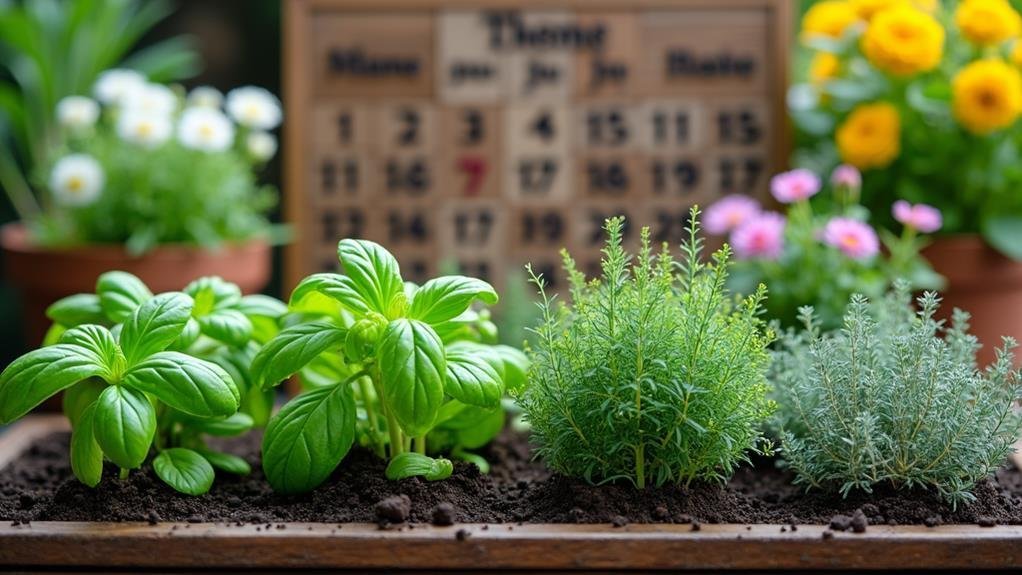When you think about seasonal planting, it's essential to understand how the timing of your crops can impact your garden's success. You might be surprised at how a few strategic choices can boost your yield and improve your gardening experience. From selecting the right crops for each season to mastering companion planting techniques, there's much to reflect upon. As you navigate through the seasonal landscape, you'll soon uncover what really makes your garden thrive—and it starts with knowing what to plant when. But where do you begin?
Understanding Seasonal Planting

When you plunge into seasonal planting, you're tapping into the natural rhythms of your garden. Understanding seasonal planting means recognizing the cycles of nature and how they affect your plants. Each season brings unique opportunities and challenges, dictating what you can grow and when.
In spring, the soil warms, and life bursts forth, making it the ideal time for seeds and young plants. You'll want to focus on vegetables like lettuce and peas, which thrive in cooler temperatures.
As summer rolls in, heat-loving plants like tomatoes and peppers flourish, demanding your attention.
Fall invites you to harvest your bounty and prepare for winter by planting cover crops or garlic, which will enrich your soil for the next growing season.
Don't forget winter! It's a time for rest, but you can still plan, organizing your thoughts for the upcoming spring.
Spring Planting Essentials
Spring planting essentials are crucial for kickstarting your garden's success. As the frost melts and temperatures rise, it's time to prepare your soil. Start by testing its pH and nutrient levels; this will help you understand what amendments might be needed.
Loosen the soil with a garden fork or tiller, adding organic matter like compost to improve fertility.
Next, choose your plants wisely. Cool-season crops like lettuce, peas, and radishes thrive in early spring, while warmer crops, such as tomatoes and peppers, can be started indoors or planted later. Make sure to check your local frost dates to avoid any mishaps.
Don't forget about proper spacing! Overcrowding can lead to poor growth and increased pest problems. When you plant, water them well right after, ensuring they've a good start.
Mulching around your plants can help retain moisture and suppress weeds, making your life easier.
Lastly, keep an eye on the weather. Sudden temperature drops can be detrimental, so be ready to cover your plants if needed.
With these essentials in place, you're well on your way to a thriving spring garden! Happy planting!
Summer Planting Guide

As the warm sun takes center stage, summer planting becomes vital for maximizing your garden's productivity. This season offers a fantastic opportunity to sow seeds or transplant seedlings that thrive in the heat. Start by choosing heat-loving crops like tomatoes, peppers, and cucumbers. These plants not only flourish in warm conditions but also provide a bountiful harvest.
Before planting, verify your soil is well-prepared. Amend it with compost to boost nutrients and improve drainage.
Once you've got your soil ready, consider direct sowing seeds for quick-growing options like beans and squash. These choices can help you fill any gaps in your garden.
Don't forget about watering! With the summer sun beating down, your plants will need regular hydration. Water early in the morning or late in the afternoon to minimize evaporation.
Mulching around your plants can also help retain moisture and suppress weeds.
Pest control is essential during summer. Keep an eye out for common garden pests and consider natural solutions, like introducing beneficial insects.
Fall Planting Strategies
Autumn's beauty brings a sense of urgency for gardeners to adopt fall planting strategies. As temperatures cool, it's the perfect time to prepare your garden for a bountiful spring.
Begin by selecting the right plants; consider cool-season crops like kale, spinach, and garlic, which thrive in the crisp air.
Make sure to enrich your soil with compost or a balanced fertilizer, as this boosts nutrient levels and helps your plants establish strong roots.
When planting, follow the recommended spacing guidelines to prevent overcrowding, ensuring each plant has room to grow.
Water your newly planted seeds or seedlings regularly, but be cautious not to overwater, as cooler temperatures can lead to excess moisture in the soil.
Mulching is also essential; apply a layer of organic mulch to retain moisture and regulate soil temperature.
Winter Gardening Tips

Winter doesn't mean your garden has to hibernate; instead, it's a time to prepare for the coming season. Use this downtime to evaluate your garden's layout and determine which areas might need improvement.
Take some time to clean and organize your tools, making certain everything's in top shape for spring.
Consider mulching your garden beds. A thick layer of mulch can insulate the soil, prevent weeds, and retain moisture, which helps your plants when the thaw arrives.
If you live in a milder climate, you might also think about planting winter crops like kale or spinach. These hardy greens can thrive even when temperatures dip.
Another essential task is to protect your perennials. You can do this by covering them with burlap or straw, which safeguards them from harsh winds and extreme cold.
Don't forget to verify your garden is well-watered before the frost hits; dry plants can suffer more damage than those that are adequately hydrated.
Choosing the Right Crops
Selecting the right crops for your home garden can make all the difference in your harvest. Start by considering your climate and the growing season. Some crops thrive in cooler weather, while others prefer the heat of summer. Take a moment to assess your local conditions and choose crops accordingly.
Next, think about your space. Do you have a small balcony or a large backyard? Certain plants like tomatoes and peppers may need more room to spread out, while herbs and leafy greens can fit neatly in smaller spaces.
Additionally, consider how much sunlight your garden gets. Most vegetables need at least six hours of sunlight daily, so pick varieties that will flourish in the light available to you.
Don't forget about your family's preferences! Growing crops you enjoy eating will make your gardening experience more rewarding. If you love fresh salsa, try planting tomatoes, cilantro, and peppers.
Companion Planting Techniques

Companion planting techniques often boost the health and productivity of your garden. By growing certain plants together, you can improve their growth, deter pests, and even amplify flavor. For instance, planting basil near tomatoes not only repels pests but also enhances the tomatoes' taste.
Another effective combination is carrots and onions. The onion's strong scent helps mask the carrots, making it harder for pests to find them. Likewise, beans fix nitrogen in the soil, benefiting neighboring plants like corn.
You should also consider the layout of your garden. Taller plants, like sunflowers, can provide shade for smaller, shade-loving species.
Additionally, using flowers like marigolds can attract beneficial insects, which help pollinate your crops and keep harmful pests at bay.
Maintaining Your Garden Year-Round
Maintaining your garden year-round guarantees that the benefits of companion planting extend beyond the growing season. To keep your garden thriving, start with regular inspections. Check for pests and diseases, and act swiftly to address any issues. A little intervention now can save you a lot of trouble later.
Next, don't forget about your soil. Regularly amend it with compost or well-rotted manure to make certain it remains nutrient-rich. This practice improves soil structure and helps retain moisture, which is essential during dry spells.
Also, plan for seasonal planting. Even during colder months, you can grow hardy greens or cover crops to protect and nourish your soil.
Watering is critical, so stay consistent, especially in dry periods. Use mulch to conserve moisture and suppress weeds, keeping the garden tidy and healthy.
Conclusion
By understanding the seasonal rhythms of planting and following the guidelines outlined in this guide, you can create a thriving home garden year-round. Whether you're nurturing cool-season crops in spring or preparing for a bountiful fall harvest, each season brings unique opportunities. Remember to choose the right crops, practice companion planting, and maintain your garden consistently. With a bit of planning and care, your garden can flourish, providing you with fresh produce and satisfaction throughout the year. Before you begin planting, it’s important to consider the layout of your garden and how different crops will interact with each other. Utilizing vegetable garden planning tips can help you make the most of your space and ensure that your plants thrive. Take into account factors such as soil quality, sunlight exposure, and water drainage to create a harmonious environment for your plants to grow. By following these tips, you can set yourself up for success and enjoy a fruitful and beautiful garden.




